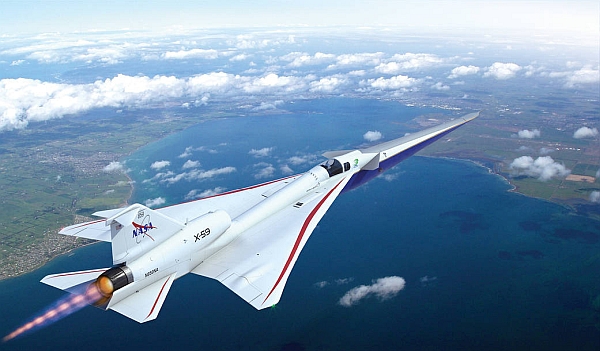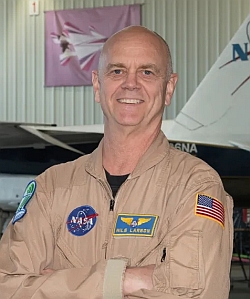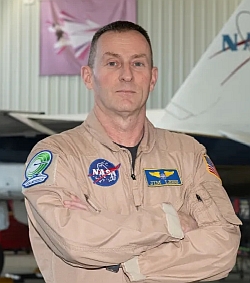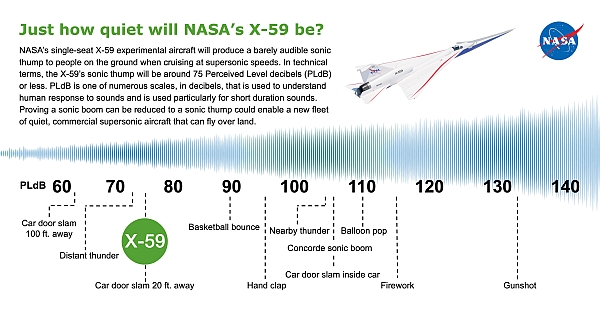Podcast: Play in new window | Download (Duration: 1:26:21 — 39.5MB)
Two X-59 test pilots discuss the NASA X-59 mission, the design and technology of the X-59 aircraft, the role of test pilots, and the challenges of flying supersonic.
Guests
David “Nils” Larson is a research test pilot at NASA’s Armstrong Flight Research Center in Edwards, California. He is NASA’s lead pilot for the X-59 aircraft, and is assigned to Armstrong’s F/A-18, F-15, T-34 research and mission support aircraft, and DC-8 airborne science aircraft. Nils also serves as senior advisor for NASA aeronautical flight research. In this role, he is a strategic advisor to program directors for agency mission directorates concerning aeronautics flight research planning, execution, aircraft airworthiness, and risk management for future flight research projects.
Before joining NASA in 2007, Nils was on active duty with the U.S. Air Force. He has accumulated more than 7,000 hours of military and civilian flight experience in more than 100 fixed- and rotary-winged aircraft.
James “Clue” Less is a research pilot and aerospace engineer at NASA’s Armstrong Flight Research Center in Edwards, California. He is a project pilot for the X-59 aircraft.
Clue has worked at Armstrong since 2010 conducting flight research and airborne science missions as a pilot for the F-15, F-18, T-34, and King Air, as well as the Stratospheric Observatory for Infrared Astronomy (SOFIA), a modified 747SP jetliner, and various remotely piloted aircraft, including the MQ-9 Ikhana and aircraft from the center’s subscale research laboratory.
Before joining NASA, Clue served as an officer and pilot in the U.S. Air Force for nearly 21 years. Upon graduating from Euro-NATO Joint Jet Pilot Training, he flew F-111 aircraft at Cannon Air Force Base in New Mexico and the F-117 Stealth Fighter at Holloman Air Force Base in New Mexico.
Quesst
Commercial supersonic flight over land is prohibited because the noise of the sonic boom is objectionable. But NASA and Lockheed Martin believe they can turn the boom into a thud by designing the X-59 in a way that manages the shock waves. The NASA Quesst mission has two goals:
- To design and build NASA’s X-59 research aircraft which includes technology that will reduce the loudness of the sonic boom.
- Fly the X-59 over U.S. cities, collect data from the communities about the sound, and share the public reaction to the quieter sonic “thumps” with the FAA and international regulators.
The regulators can then consider writing new sound-based rules to lift the ban on supersonic flight over land.
On January 12, 2024, NASA held a public unveiling ceremony for the X-59 supersonic research aircraft.
Video: Rollout of the X-59 Quesst Supersonic Plane (Official NASA Broadcast)
Hosts this Episode
Rob Mark and our Main(e) Man Micah.
- SEO Powered Content & PR Distribution. Get Amplified Today.
- PlatoData.Network Vertical Generative Ai. Empower Yourself. Access Here.
- PlatoAiStream. Web3 Intelligence. Knowledge Amplified. Access Here.
- PlatoESG. Carbon, CleanTech, Energy, Environment, Solar, Waste Management. Access Here.
- PlatoHealth. Biotech and Clinical Trials Intelligence. Access Here.
- Source: https://www.airplanegeeks.com/2024/01/14/782-nasa-x-59-test-pilots/







